Charging 101: Blow your mind (not fuses) with these top EV charging tips.

EV charging tips and information for safer electric fueling (AKA: charging)
We’ve touched on charging electric cars in several of our previous electric vehicle articles, but this installment is 100% all about getting charged up. Read on for EV charging tips and recommendations!
If you’ve just purchased an electric car, we encourage you to read the owner’s manual for information and recommendations specific to your make and model.
Let’s get charged up, shall we?
Know your EV charging levels
We’ve spent some time on charging levels already, so we’re sticking to the basics here. Be sure to check out “Is an electric vehicle right for me?” and visit TVA EnergyRight’s charging website for more information about EV charging levels.
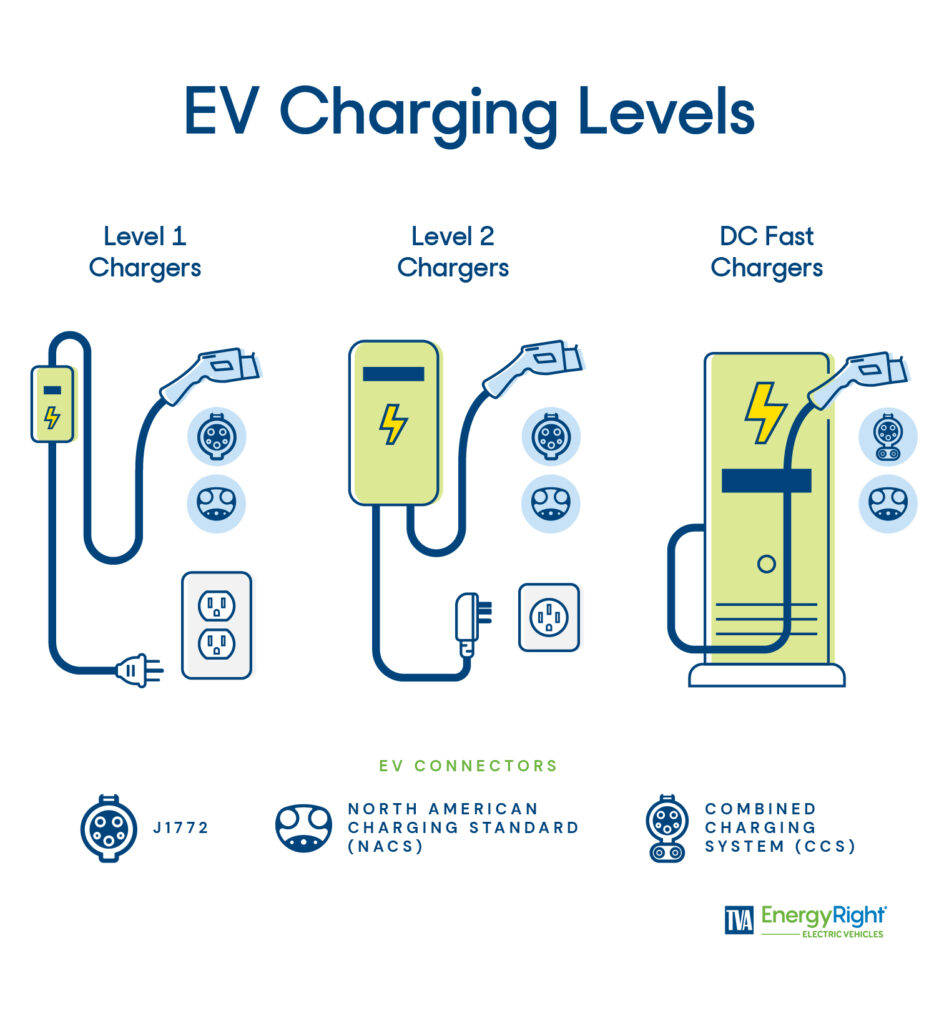
The three levels of EV charging:
- Level 1: Chargers that plug into a regular 120-volt home outlet, just like the one you use to charge your phone or toothbrush.
- Level 2: 240-volt chargers (like a dryer outlet) can fully charge an empty battery-only EV (BEV) in 4-10 hours.*
- DC Fast Charging: Typically found at public locations like malls or retail centers and off interstate exits. They’re intended for short stops on long road trips and can fill up a low battery in 20-60 minutes.
*Assuming a 60 kWh battery
Source: U.S. Department of Transportation
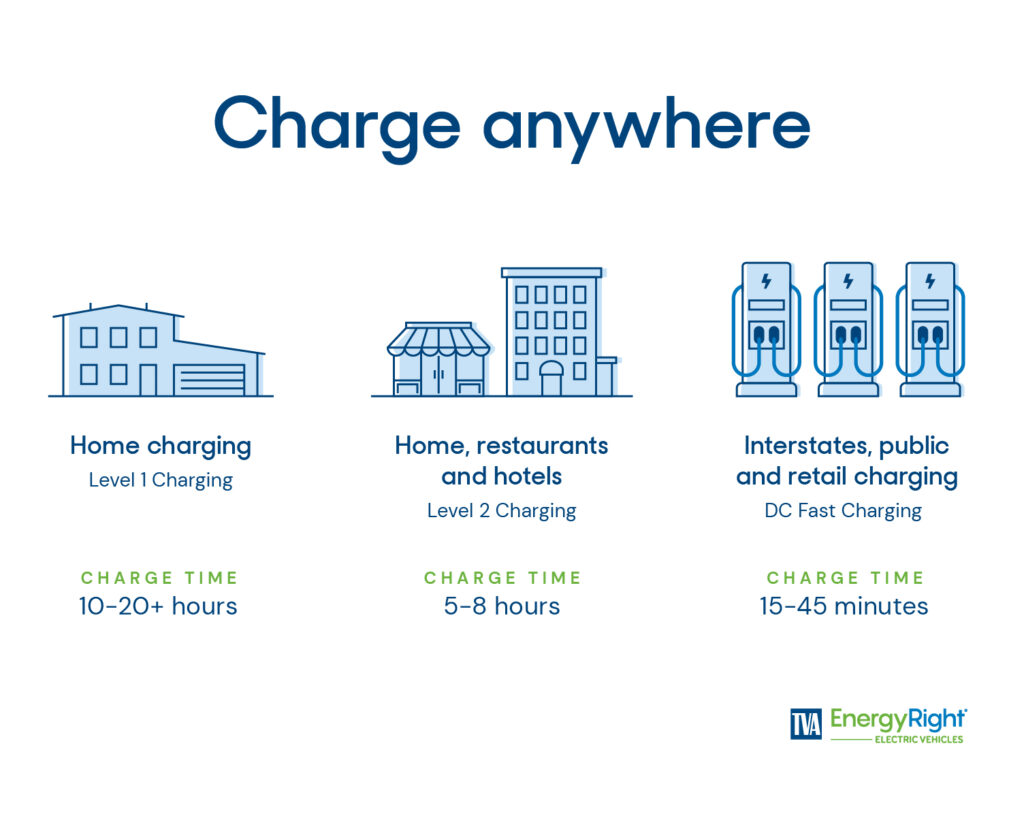
What you’re calling a charger probably isn’t a charger.
Technically speaking, a charger isn’t a charger.
Did we just blow a fuse?
That Level 1 or Level 2 charger in your neighbor’s garage and that fast charger around the corner from your office is actually a device known as electric vehicle service equipment (EVSE). Just rolls right off the tongue, doesn’t it?
The National Electronics Manufacturers Association (NEMA) tells us that although an EVSE is a more accurate name, most people are going to refer to that device as a “charging station” or “EV charger.”
And once you get past this explanation, so will we. Still, curious minds may want to know why an EV charger is also known as an EVSE.
For starters, the charger is actually built into the vehicle itself. The EVSE – that thing you plug into the wall outlet and will likely continue to call a charger or charging station – is essentially a very sophisticated extension cord.* Among other things, the EVSE tells the vehicle’s internal charger how much power is available and then sends the current to the car.
Read on to find out what else EVSEs do!
*Please Note: TVA EnergyRight does not recommend using a conventional extension cord to charge an EV.
Charging your EV at home is safe and convenient.

EVSEs (AKA charging stations) are truly incredible pieces of technology that help keep you, your electric car and your home safe. As approximately 80% of EV charging happens at home, it is essential that you have safe and reliable charging equipment, which should be installed by certified technicians.

Recalls on automobiles – both electric and gas-powered varieties – happen with some frequency. You can sign up for email alerts or search for recalls using your Vehicle Identification Number (VIN) on the National Highway Traffic Safety Administration’s (NHTSA) website. Or, you can sign up for recall alerts by downloading NHTSA’s SaferCar app on IOS or Android. NHTSA recalls also include equipment like charger cords, car seats and tires.
Now, let’s get back to our EV charging tips! Think of a charging station as a walkie-talkie that allows your charger and car to communicate about what’s going on with its fuel source: electricity.
Eight common charging station (AKA EVSE) safety features:
- Safety lock-out features prevent current from flowing through the charger cord when it isn’t connected – or isn’t connected correctly – into the car’s charging port.
- Auto-restart after a power outage.
- Short circuit or fault detection and shut off.
- Enclosures (the part of the unit that mounts to the wall) that meet NEMA safety requirements for water resistance, protection from dust, shock protection and more.
- Convenient power cable storage.
- Current regulation ensures that the current delivered to your car doesn’t exceed its capacity.
Advanced features of charging stations:
- Load detection capabilities that can sense other large electrical loads in your home (like dryers, hair dryers or electric heaters) and pause EV charging until the load eases.
- Wifi and app connectivity.
- Adjustable power capacity.
Source: Green Car Reports, ENERGY STAR
To compare EV chargers, Enervee® Scores, user ratings and more, visit the TVA EnergyRight Marketplace.
Can I charge my Rivian with a Ford charging station?
Yes! Another great feature of charging stations is that they enable interoperability; which is a fancy EV word for the ability to charge your Rivian or BMW i4 with a Ford Charge Station Pro or your Chevy Bolt with your friend’s home charger.
Interoperability isn’t limited to manufacturers’ charging stations. It also makes public charging easier and more accessible and plays a role in strengthening the charging infrastructure. We’d be remiss if we didn’t note that as of publication, you can’t charge your CSS-equipped Chevy with someone else’s home Tesla charger. That may change soon, however!
In November 2022, Tesla made its charging standard available to other EV manufacturers and renamed its charger to the North American Charging Standard (NACS). Ford and General Motors recently announced that starting next year, drivers will be able to charge their cars (with an adapter) at Tesla charging stations, the largest charging network in the country. They’ll also start offering models equipped with the NACS connections. In 2024, Stellantis became the last major North American automaker to announce its move to the SAE standardized charging connector.
To help speed the construction of a convenient, reliable charging network, the Biden-Harris administration announced a series of actions to encourage the creation of a Made-in-America EV charging network. To help facilitate EV adoption and travel in its service area, TVA EnergyRight is collaborating with state agencies, local power companies and third-party charging developers to develop the Fast Charge Network, which will place fast charging stations at least every 50 miles along major travel corridors in the seven-state region.
What is the Combined Charging System (CCS)?
If you’re buying a car in the U.S. then it will probably have a CCS combo plug, although Ford and GM will also offer the NACS plug in the coming years. The CCS is a standard for charging electric vehicles that can accommodate Type 1 and Type 2 AC charging and DC charging because it incorporates a J1772 outlet. For more on the AC/DC conversation, you’ll want to head over to our blog about electric vehicle battery basics.
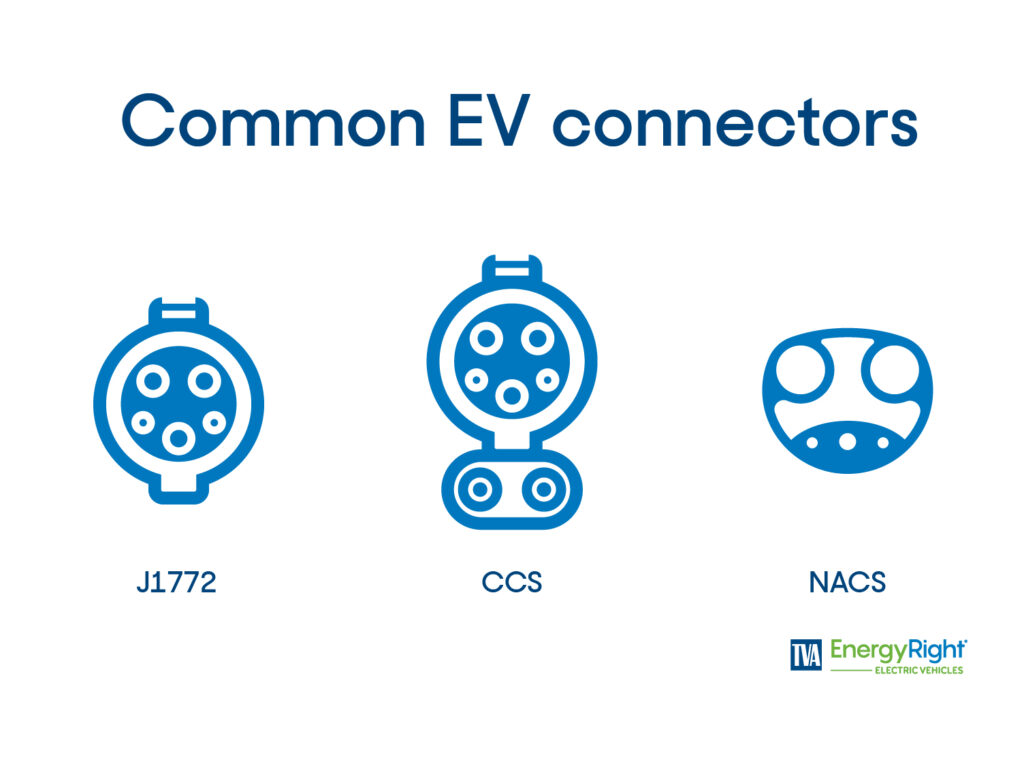
To qualify for federal funding as outlined by the Biden-Harris Administration, companies must adopt the CCS standard.
Although Tesla marches to its own beat, the company offers a CCS adapter so its drivers can charge at third-party charging stations. Plus, automakers such as Ford, General Motors, Rivian and others are partnering with Tesla to allow their EV drivers access through adapters as well.
Source: EV-america.com, livewire.com
Can I use an adapter to use a different charging standard?
With the exception of Tesla’s adapter, most manufacturers and third-party charging networks don’t recommend using adapters because they can increase the likelihood of faults. A fault is an abnormal electric current like a short circuit or open-circuit fault and may impact safety.
Source: electricityforum.com, EVgo.com
Do I need to have an EV charger professionally installed?
If you glean just one EV charging tip from this blog, it’s this: Don’t make charger installation a DIY project. The EV owners we spoke to strongly recommend having a Level 2 home charger professionally installed.
Gas station owners don’t install their own gas pumps. Why should you install your own EV charger? Leave this one to the pros!
Is it safe to charge my electric vehicle outdoors if it’s raining?
In an interview for Autotrader.com, Nissan’s Johnathon Ratliff said, “Absolutely, it’s safe to charge in nearly any weather condition.”
Using the Nissan Leaf as an example, Ratliff said its IP 67 rating is equivalent “to submerging any component of our vehicle in water at 1 meter for 30 minutes.”
We’re not going to get deep into the technicalities of IP ratings here; just know that the higher the number, the better protection the device affords against water and dust.
IP ratings on public Level 2 chargers should more than exceed any weather condition you’d face when plugging your EV into a charging station in the rain.
With Level 2 charging…the device acts as a big safety switch,” Ratliff explains. “When you plug the car in, it starts communication with the device. It does measurements to determine everything is safe and only then will it begin the flow of energy.”
If you’re planning on purchasing a charger for outdoor use at home, make sure the IP rating is IP66 or higher.
Consider joining a charging network
Although most owners schedule their cars to charge at home, many recommend joining a charging network for on-the-road and on-the-go convenience. If you drive long distances for work or leisure, charging networks give you access to public fast charging stations on your travel routes. User-friendly apps make it easy to find and pay for your electric fueling stops.
Some popular options include ChargePoint, Chargeway, EVgo and PlugShare. (Please note: This is not an exhaustive list and TVA does not endorse any particular company.) You can find them here:
- Apple’s App Store: ChargePoint, Chargeway, Electrify America, EVgo and PlugShare.
- Google Play: ChargePoint, Chargeway, Electrify America, EVgo and PlugShare.
EV charging tips and etiquette
We could probably devote an entire blog to this one, but we’ll try to keep this particular EV charging tip short and sweet: Treat others as you want to be treated.
- Do not unplug someone else’s EV.
- 80% charged is A-okay!
- Charge at a charger, don’t park at one.
- Don’t stay past your charge.
- If your car can’t fast charge, leave the fast charger for a car that can.
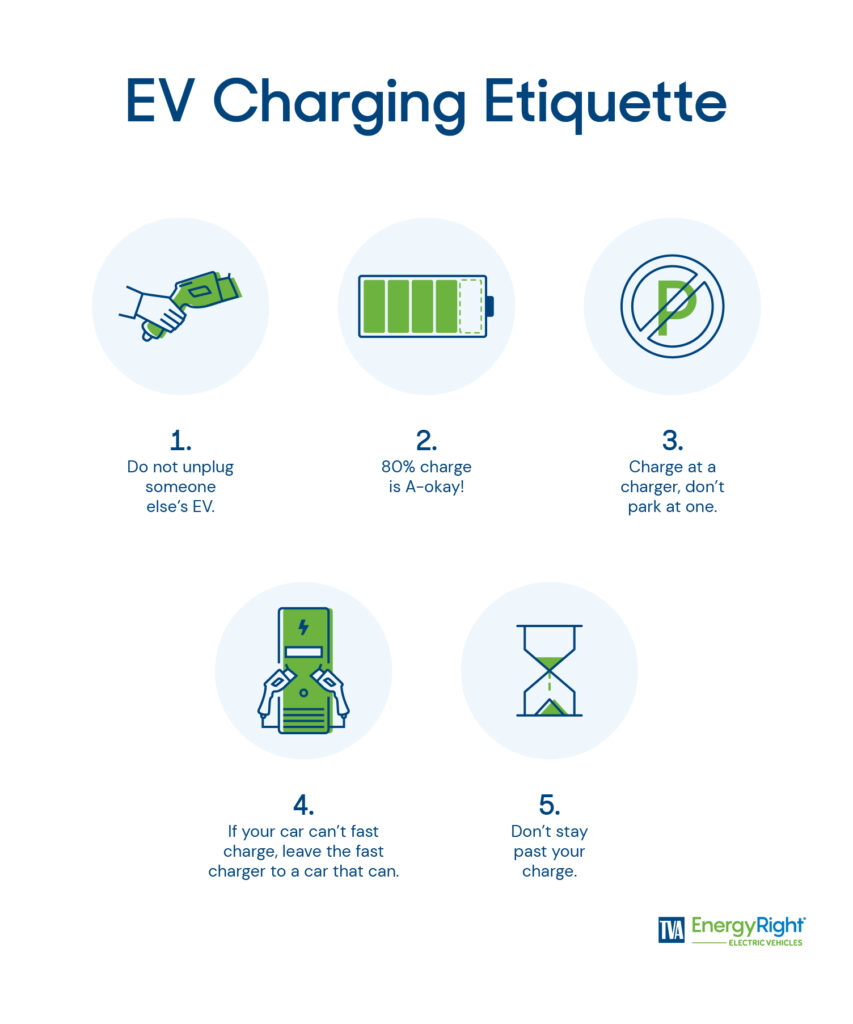
We had some fun exploring EV chargers and EV charging tips with this installment. Be sure to stay tuned: We’re already planning in-depth articles on home charging and fast charging.
In the meantime, if you’re looking for answers to general questions about electric cars or are curious about what EV owners in the region have to say, check out “Top 10 EV questions answered” and “Beginning your electric vehicle journey: EV owners share their EV tips.” For a deeper dive into EV batteries, don’t miss our Q&A about EV batteries.
We’ll help you stay on top of the latest electrifying developments. Sign up to receive news and updates from the TVA EnergyRight EV team!
This site’s content (including, without limitation, references and links to third-party information) is based on information provided at the time of publishing, and TVA makes no warranty therein.
Battery Basics: What’s the electric vehicle battery warranty? How do EV batteries work? Are EV batteries recyclable?
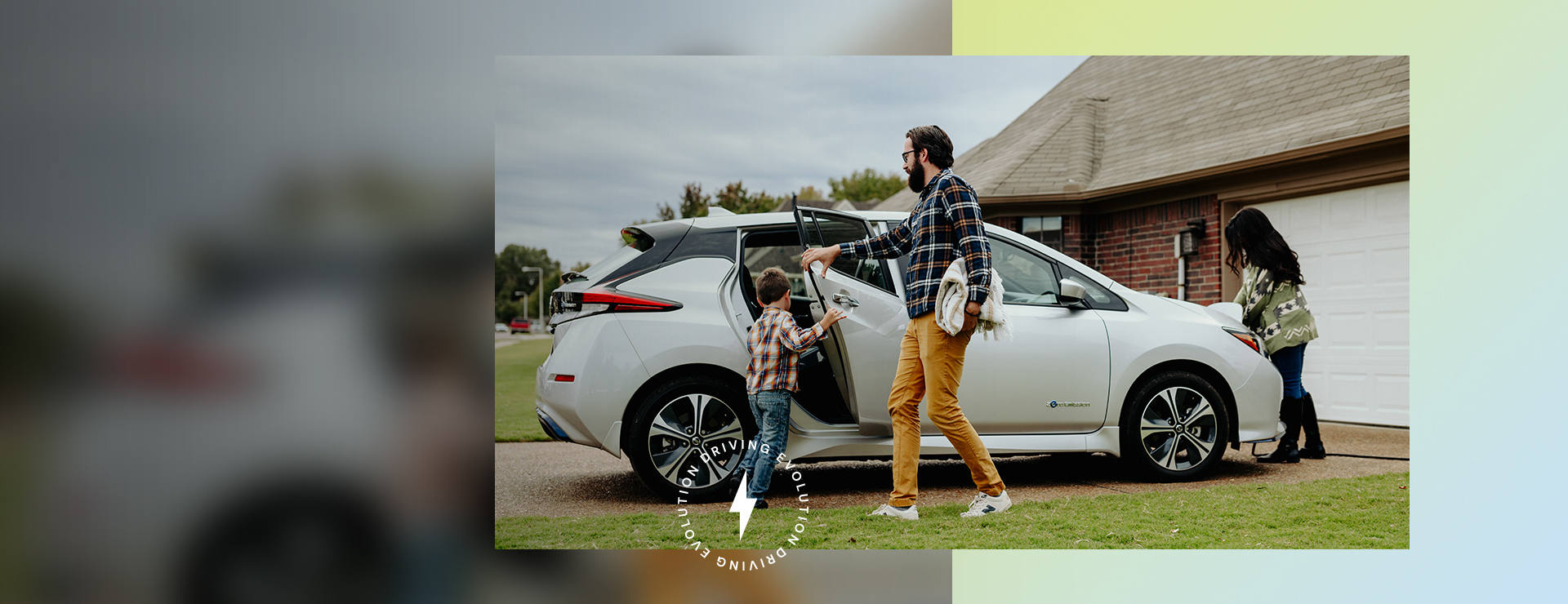
What you need to know about EV battery warranties, how EV batteries work, currents, kilowatts and more.
Have you ever wondered what the standard EV battery warranty is? Or how EV batteries work? Or how batteries in an electric car, boat or motorcycle can replace a gas-powered engine?
You’re not alone! Fortunately, you don’t need to know exactly how an internal combustion engine works in order to drive your car or motorcycle. If that were the case, there would be plenty of us looking for alternative modes of transportation.
Although we don’t necessarily need to know how EV batteries work, many of us not-so-secretly want to know. But first, let’s get that EV battery warranty question out of the way:
What’s the standard EV battery warranty?
Federal law mandates that manufacturers offer at least eight years or 100,000 miles of EV battery warranty coverage; however, some manufacturers offer a 10-year warranty.
SOURCE: Department of Energy, U.S. News & World Report
How does an EV battery actually work?
An electric vehicle – whether you’re talking about a truck, jet ski or bicycle – uses battery packs to store electrical energy to power the motor (or motors) connected to the wheels.
For your daily dose of trivia: The modern battery was invented by the Italian physicist Alessandro Volta in 1800 (Britannica).
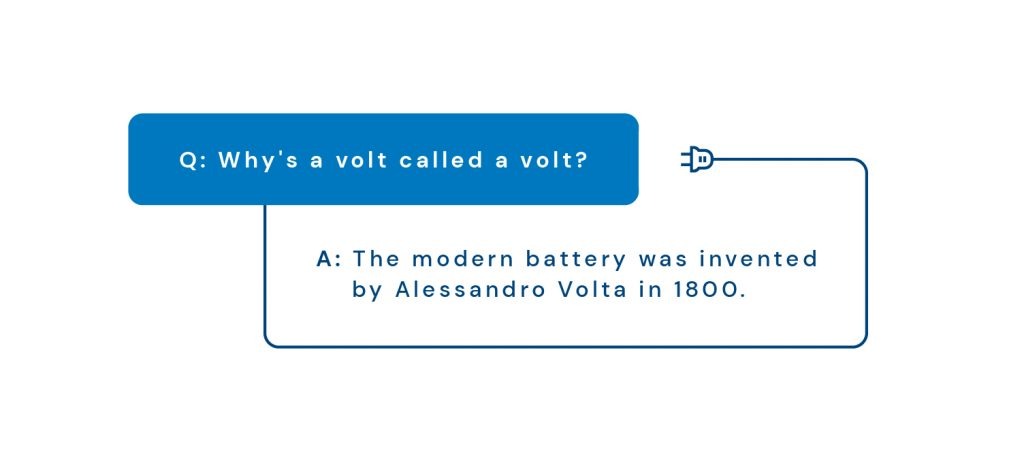
EV batteries are charged by plugging the EV charger’s cord into the vehicle’s charging port. They can also gain charge from regenerative braking systems. “Regen” braking systems are unique to EVs. They turn a vehicle’s kinetic energy (energy that relates to motion) back into electric energy. This transformation occurs during braking, deceleration or coasting downhill. Plus, these systems also dramatically reduce wear and tear on a vehicle’s braking system.
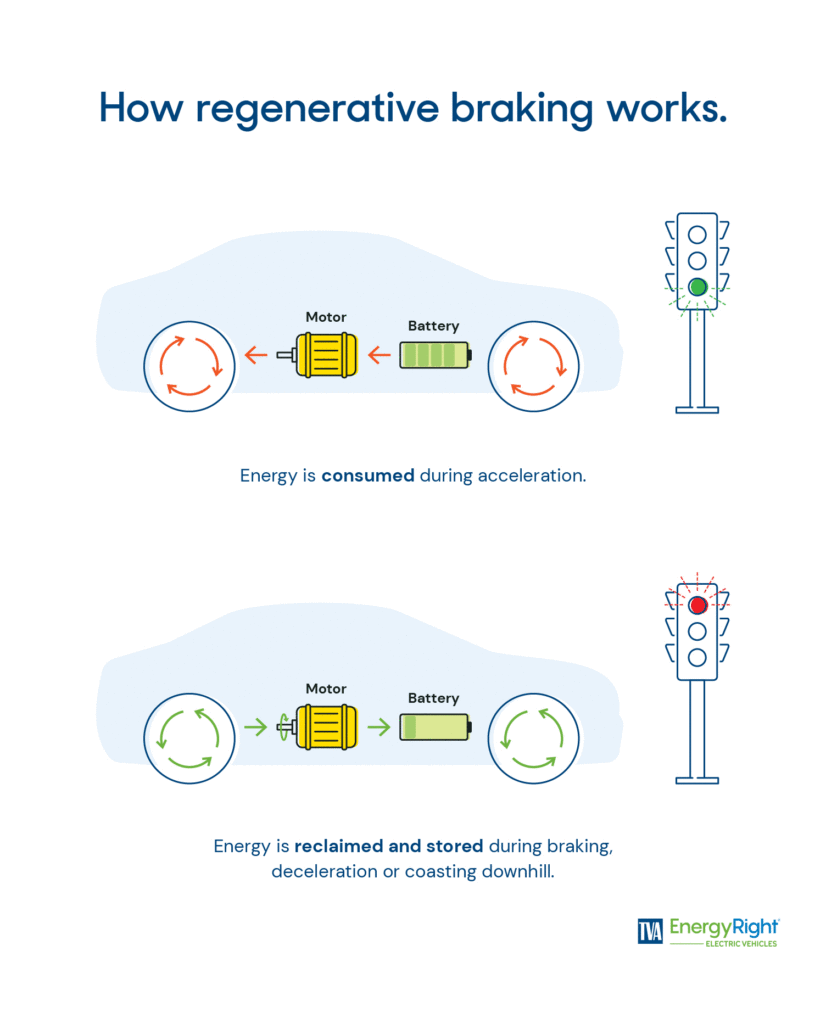
SOURCE: PC Mag, ScienceDirect.
What’s the AC/DC Deal?
Before we go too far down the charging path, let’s hit the basics: AC stands for alternating current. DC is short for direct current.
Alternating current describes the flow of electricity. Simply put: With AC, the direction of the current changes (alternates) direction every 60 seconds in the U.S. (energy.gov). The alternating current makes sending electricity over long distances (like from the power plant to your home) more efficient. AC is used in your home and at most commercial locations. AC powers Level 1 and Level 2 EV chargers.
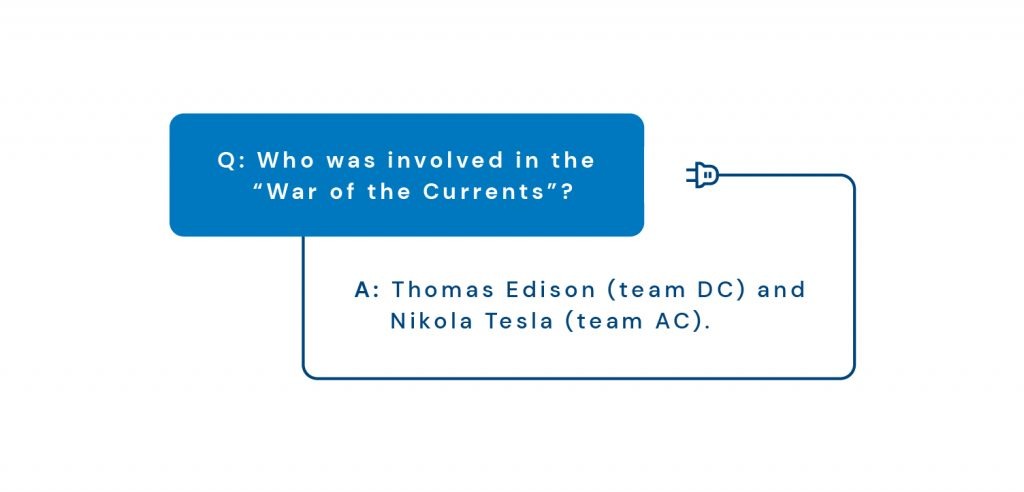
Direct current provides constant voltage and the current flows in one direction. It doesn’t change or vary over time. DC powers EV fast chargers because the direct flow of current – delivered directly to the battery – can charge more quickly.
Do electric cars have different inlets for AC and DC chargers?
Some EVs have different charging ports for AC and DC connectors. Others use a Combined Charging System (CCS). The CCS is a combination of both plugs: The Level 1/Level 2 AC pins are on top and two additional DC pins are at the base to accommodate the higher electrical current. Check out the charger illustration below!
A kilowhat? Oh, a kilowatt!
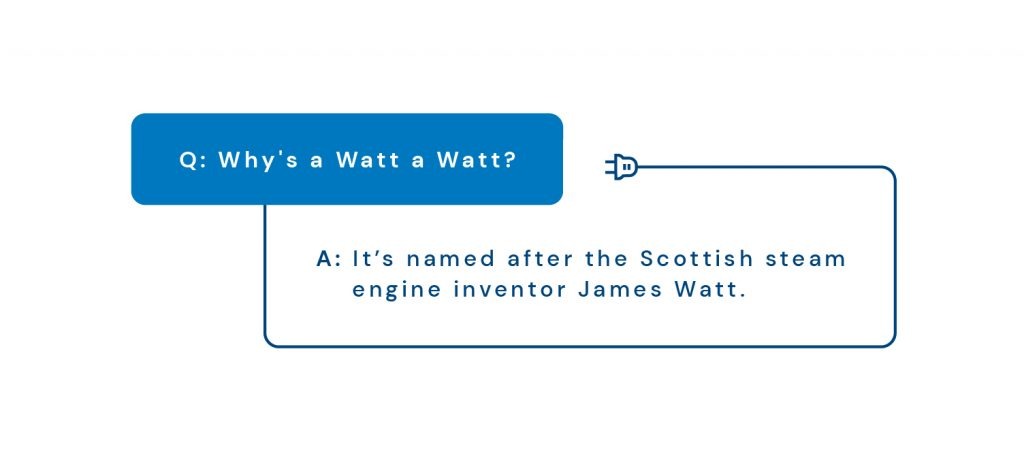
So what’s a kilowatt (kW) and why do kilowatt hours (kWh) matter?
A kW is 1,000 Watts, a unit of measure for power. Power tells us how fast energy is moving at any moment in time. A kWh tells you how many of those units are consumed in an hour.
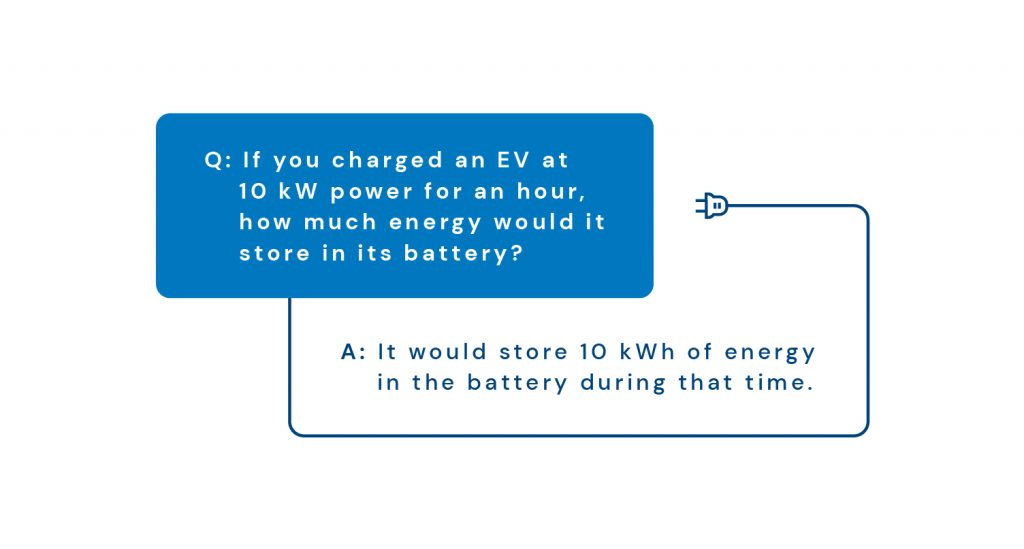
Kilowhy?
Why do we care about kilowatts and kilowatt hours? Because they can help tell us how much it will cost to charge an EV.

They also determine how quickly it can recharge. The higher the kW your car can accept, the faster it will charge. (More on this later!)
*Find miles per kWh for common EV makes and models here.
**Example CDE Lightband residential electricity rate as of November 2024.
What is EV battery capacity and why does it matter?
Craving another answer to kilowhy? Look no further than battery capacity, or the amount of energy that an electric vehicle’s battery pack can contain. This capacity is measured in kWh.
Battery capacity and EV range – how far a vehicle can go on a single charge – go hand in hand. Generally speaking, the greater the battery capacity (or the bigger the battery), the greater the range.
This is why some manufacturers offer different battery sizes. The Nissan LEAF, for example, currently offers two battery options. Their standard 40 kWh battery is EPA rated for up to 149 miles and the 60 kWh battery is EPA rated for up to 212 miles. The Ford Mach-E offers a 72 kWh standard battery and an optional 91 kWh extended-range battery.
Why do EV battery charging times vary?
Just as gas-powered cars and trucks have varying gas tank capacities, EV battery charging times may also vary depending on battery capacity and how much power is being delivered to the battery. Battery management systems in today’s EVs automatically manage charging variables to maximize charging speed, ensure safety and minimize battery degradation.
For more on charging, be sure to check out “Blow your mind (not fuses) with these top EV charging tips” and “How do I choose an electric vehicle that’s right for me?”
There are three basic levels of EV charging:
- Level 1: Also known as “slow chargers” or “trickle chargers,” Level 1 chargers can plug into any standard 120-volt home wall outlet, the very same type of outlet you use to plug in your cell phone or TV.
- Level 2: This is what most EV owners recommend for at-home charging. These 240-volt chargers are just like the ones your dryer plugs into and can charge an empty battery-only EV (BEV) in 4-10 hours.
- DC Fast Charging: These chargers are great for quick stops on long road trips and can fill up an empty battery in 20-60 minutes.
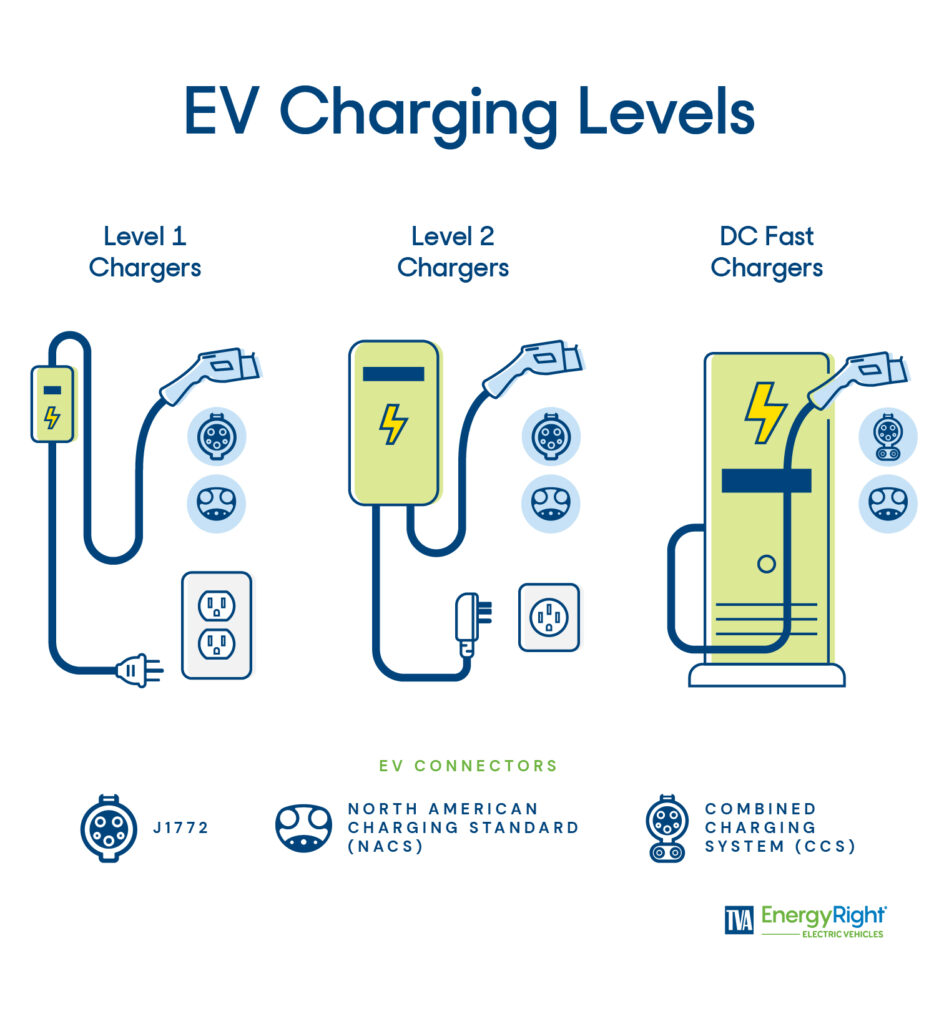
Looking for tips on getting the most out of your battery? Check out our post, “Do you know the answers to these 10 common questions about electric vehicles?”
SOURCE: U.S. Department of Transportation
What are the different types of batteries used in EVs?
Nickel metal hydride
Early EVs and some hybrids use durable nickel metal hydride batteries. However, these batteries are expensive, lose their charge more quickly than modern EV batteries and are inefficient at high temperatures.
Lithium-ion
This is what many EVs on the market today use. When compared to lead or nickel metal hydride batteries, they’re lighter and highly efficient.
Lead acid
Lead acid batteries, like those used to supply the electricity a gas-powered car needs to start, are not used in EVs because they’re heavy and more susceptible to extreme temperatures.
Solid-state
We’ll call these near future-state quick-charging batteries. They’re in development right now, but some manufacturers are planning to roll them out as early as 2027. Solid state batteries offer higher energy density, greatly extended range and faster charging times.
As some manufacturers continue to push projections on when solid-state batteries will be brought to market, there could also be another option: semi-solid-state batteries. These cells use a hybrid design of solid electrolyte and liquid electrolyte which could serve as a bridge as a transitional technology between the two types of batteries.
Source: GreenCars.com, PC Mag
Can I recycle EV batteries?
Yes! Well, your car’s manufacturer can. Although most EV car batteries on the road today aren’t ready for retirement, automotive manufacturers are already making plans for recycling and repurposing used EV batteries.
EV batteries contain valuable minerals like lithium, cobalt and nickel – all of which can be recycled, repurposed and reused.
According to U.S. News and World Report, Tesla recycles batteries on its own and Ford, Volkswagen, Toyota, Audi and Volvo have all partnered with Redwood Materials for battery recycling. Hyundai is working with UL Solutions to create battery energy storage systems from used EV batteries.
Are EV batteries safe?
EV batteries are designed with safety features to prevent overheating, fires and explosions. However, manufacturing defects, damage and improper charging can lead to battery fires. As with any vehicle defect, manufacturers may have to issue a recall to address safety concerns.
Poorly installed Level 2 chargers can also lead to safety concerns. The solution? Never use an extension cord to charge an EV and hire a licensed electrician with EV experience or is certified through a program like the Electric Vehicle Infrastructure Training Program (EVITP) to install safety-certified Level 2 EV charger.
Just as each model year brings new features to our favorite cars, trucks, motorcycles and ATVs, EV battery technology is constantly evolving. We’ll help you stay on top of the latest electrifying developments. Sign up to receive news and updates from the TVA EnergyRight EV team!
This site’s content (including, without limitation, references and links to third-party information) is based on information provided at the time of publishing, and TVA makes no warranty therein.
Beginning your electric vehicle journey: EV owners share their EV tips

EV tips you need to know before buying an electric vehicle
Just as you would before buying any vehicle, you should probably do a little homework – and some soul-searching – before buying a car fueled by electricity. We asked our EV-driving friends and colleagues for real-life tips and tricks for getting the most out of owning an electric car.
Here’s what they had to say.
Figure out how far you drive each week before buying an EV.
Electric Vehicle Database lists nearly 30+ EV models offering a range of 300 miles or more and the U.S. Department of Transportation Federal Highway Administration reports that the average driver travels about 35 miles each day. That means many EVs can handle an average weekly commute on a single charge.
So how much range do you really need? Track your driving, you probably don’t drive as much as you think you do.
Even so, you’ll want to make sure that your EV can handle your daily commute and weekend activities. For extra peace of mind, several of the EV owners we talked to recommended overestimating your range requirements by 20%. This gives you peace of mind and the flexibility to handle extreme weather conditions and usual driving events.

Understand your charging options.
There are more and more public chargers, solar chargers and DC fast charging options out there, but the cheapest and most convenient way to charge up is to plug in at home.
If you don’t have a garage or carport, look for a weatherproof home EV charger. You can compare EV chargers and NEMA enclosure ratings on the EnergyRight Marketplace.
Need a deeper dive into home EV charging? Check out this recent charger review from ZDNET, an independent business technology news and product review website.
For those who live in apartment complexes without chargers, look for charging options near your office or ask your property manager to consider installing chargers for residents to share.
Regardless of how or where you charge, all folks we talked to agreed that making a plan for charging your EV before you drive it home is a smart move. Many of them also noted that they charge up later in the week to make sure they’re ready to roll all weekend long.
Spring for a professional charger installation.
Although you can charge an EV using a standard 120-volt grounded wall socket, most EV owners recommended having a Level 2, 240-volt charger professionally installed.

The EV owner community agrees that EV charger installation isn’t where you want to cut corners. If you’re going to invest in an EV, find a trusted, licensed electrician who can safely install a 240-volt Level 2 charger on your property. As with any electrical work, improper installation can have disastrous results. Leave EV charger installation to the pros!
Check out InsideEVs’ video about how to safely charge your EV here.
You’ll need to plan for longer road trips.
Until fast chargers are as ubiquitous as gas stations, longer road trips will require some extra planning.
You can always use our Find a Charger tool to plan your route; however, if you need on-the-go charger information, consider using mobile apps that help you find charging stations along the way. A lot of drivers recommend A Better Routeplanner and you can even use Google Maps, but you won’t get as much real-time information as you will from specialized EV charging apps.
Our EV drivers use apps like ChargePoint, Chargeway, EVgo and PlugShare. You can find them here:
- Apple’s App Store: ChargePoint, Chargeway, EVgo and PlugShare.
- Google Play: ChargePoint, Chargeway, EVgo and PlugShare.
Calculate your electric fuel costs before you buy an EV.
Some EV owners were surprised by how much they saved by going electric. Others were surprised they weren’t saving more on fuel costs, but they all loved the environmental savings that going electric offers.

Use this formula to estimate out how much fueling up with electricity will cost you:

* Find miles per kWh for common EV makes and models here.
**Example Nashville Electric Service NES residential electricity rate as of 3/14/23.
Be honest with yourself about what you need from an EV.
We found out that EV owners were a little bit like Goldilocks when it came to their EVs.
Some wished they’d bought a larger car (they went with a smaller model to maximize efficiency). Others discovered that the extra room in the frunk (you know, that place where the engine is “supposed” to be) was more than enough for their junk.
A majority of our drivers simply bought the car that best suited their needs. For one performance-driven driver, it was a used Tesla Model S with Ludicrous Plus Mode. For another environmentally-conscious family of five, it was a brand-new Chrysler Pacifica plug-in hybrid minivan. Others may find their happy spot behind the wheel of a Toyota Prius or the Hummer EV SUV.
Think about what you need from your car and find an EV that fits juuuuust right.
Take the next step of your EV journey with us.
One of the many reasons we started the Driving EVolution blog is to help first-time EV buyers feel confident in their car-buying decisions. We hope you’re finding the information you’re looking for. Be sure to check out our previous posts, “Types of EVs and the EV alphabet: What’s a BEV, PHEV and HEV?” and “Do you know the answers to these 10 common questions about electric vehicles?”
This site’s content (including, without limitation, references and links to third-party information) is based on information provided at the time of publishing, and TVA makes no warranty therein.
Do you know the answers to these 10 common questions about electric vehicles?

Answers to common (and sometimes funny) questions about electric vehicles
1. Can an EV go through a car wash?
Yes, absolutely! Stow your sponges and squeegees: You can take your electric car through any automated car wash. Automatic car washing systems may include soft-touch, no-touch, high-pressure and tunnel washes.
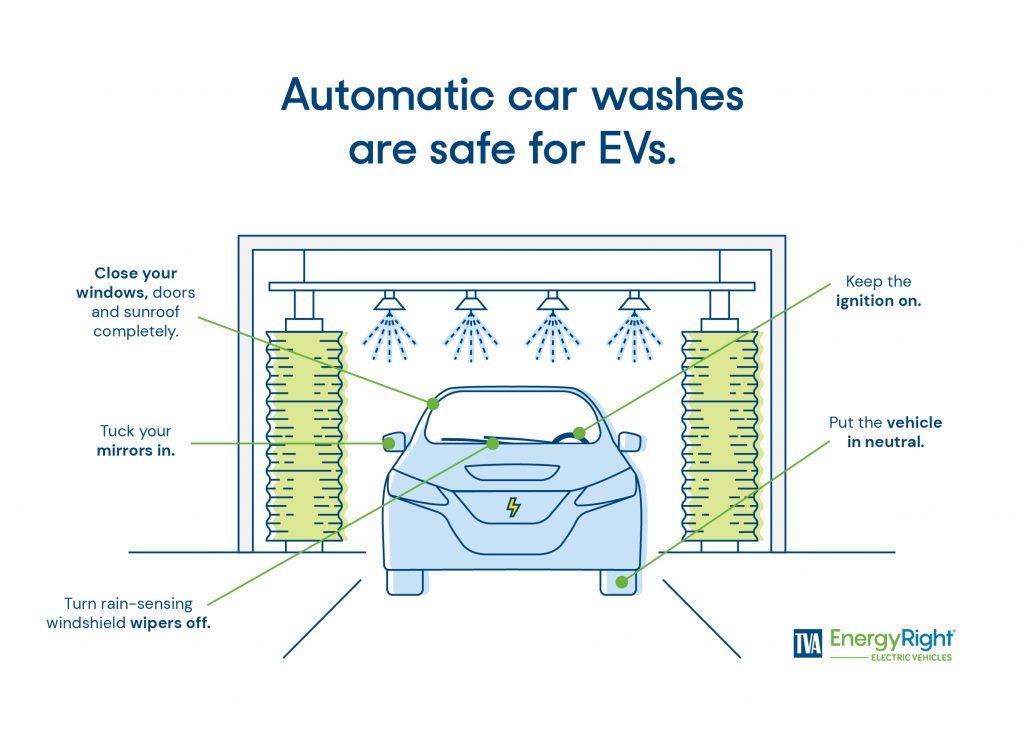
Automatic car washes are as safe for EVs as they are for cars powered by gas (aka internal combustion engines, or ICE). These washing systems will not damage batteries, electrical systems or motors. (You can even charge your EV in the rain, but that’s a topic for another day.)
Just as you would when taking your ICE ride through an automated tunnel car wash, it’s a good idea to follow this checklist when you line up for a sudsing:
Automated car wash tips:
- Tuck your mirrors in.
- Close your windows, doors and sunroof completely.
- Turn rain-sensing windshield wipers off.
- Keep the ignition on.
- Put the vehicle in neutral.
One more thing, because sometimes we can’t help ourselves! About those sponges and squeegees: You may want to hang on to them. Although you can safely run your EV through a car wash, these convenient cleansers can scratch or damage the paint finish of any car, ICE or electric. Plus, many car washes use environmentally harmful chemicals that can degrade paint and pollute rivers and streams. From an environmental and budgeting standpoint, your best bet is to hand-wash your car with biodegradable soap.
2. How many makes and models of EVs are available in the U.S.?
U.S. electric vehicle (EV) sales hit a record high in Q3 (July, August and September) 2024, with 346,309 units sold—a 5% increase from Q2 2024 (April, May and June) and an 11% jump year-over-year, according to Kelley Blue Book. EV market share climbed to 8.9%, up from 7.8% in Q3 2024, reflecting steady growth despite a slower pace. 2025 could potentially be another solid year for EVs with new models expected from manufacturers such as Acura, Audi, Cadillac, Ferrari and more!
There are nearly 100 battery-only EVs (BEVs) and plug-in hybrid EVs (PHEVs) available in the U.S. And here’s a look at all of them.*
*Available in the U.S. as of November 16, 2023.
SOURCE: EVAdoption.com
3. How does extreme cold or hot weather affect EVs?
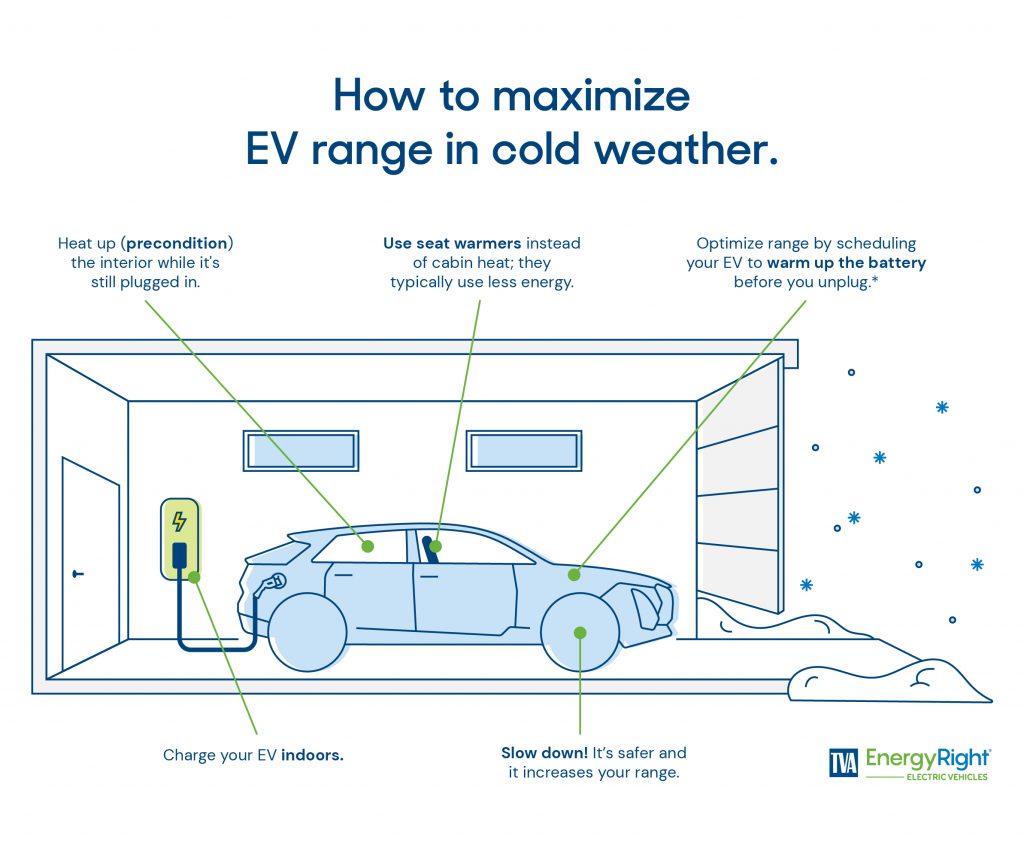
After the record-snapping cold spell of 2022, the cold weather question is fresh on the mind. Here’s the thing: All cars, gas and electric, use more energy in cold weather. That means lower gas mileage for ICE drivers and a shorter range (how far an EV can go on a single charge) for EV drivers.
According to Consumer Reports, extreme temperatures can reduce an unplugged EV’s range by about 20%, and recharging takes longer. Here are a few tips for getting the most out of your EV range during extreme cold (20° F and below) temperatures:
How to maximize EV range in cold weather:
- Charge your EV indoors.
- Precondition your cabin while the EV is still plugged in. Many EVs allow you to schedule preconditioning – EV lingo for heating or cooling the cabin – so you can climb into a toasty-warm car on a cold day without using energy from the battery.
- Allow your battery to warm up to optimal operating temperature before leaving your garage.*
- Use seat warmers instead of cabin heat; they typically use less energy, and they offer instant gratification.
- Slow down! Not only is it safer, but it increases your range. The faster you go, the more energy your EV uses, so set that cruise control and let it ride!
SOURCE: energy.gov
*Most EVs have a preconditioning function that you can schedule to automatically warm up the battery and cabin from the power grid instead of your vehicle’s battery. Preconditioning time may vary depending on the temperature and type of EV you drive.
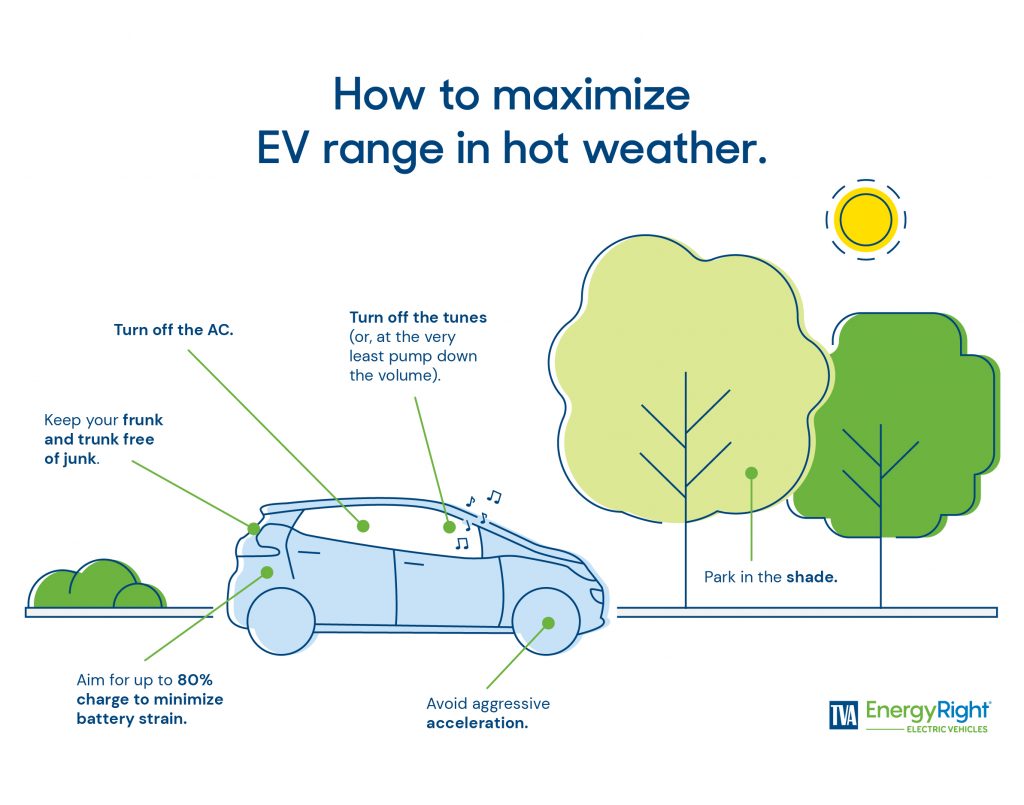
Extreme heat (95° F and above) can cause a temporary drop in an EV’s range. According to PCMag, most cars are built with heating and cooling systems to regulate their temperature to prevent long-term detrimental effects on your battery.
How to maximize EV range in hot weather:
- Park in the shade.
- Precondition your EV interior.*
- Avoid aggressive acceleration.
- Keep your trunk and frunk free of junk (lighten your payload).
- Aim for up to 80% charge to minimize battery strain.
- Charge during off-peak hours.
- Keep your tires properly inflated.
SOURCE: KBB.com
*Many electric cars have a “precondition” feature that lets you remotely cool down the interior while the EV remains plugged in.
Preconditioning can help optimize your EV’s performance in hot weather by reducing the strain on the air conditioning system once you start driving. Since the cabin is already cool, the battery isn’t overworked, dropping the temperature to a comfortable level.
4. What are the environmental advantages of EVs?
Generally speaking, over the lifetime of the car, electric vehicles are better for the environment than their gas-powered counterparts, even when you account for battery manufacturing.
Here are a few big-picture environmental benefits of driving electric:
- Have zero tailpipe emissions.
- EVs contribute fewer overall emissions than ICE vehicles.
- EVs are 2-3x more efficient than gas-powered cars.
- Lithium-ion manufacturing is more climate friendly than the alternative.
- EVs with bidirectional charging* capabilities can help stabilize the energy grid.
SOURCES: EPA.gov, fueleconomy.gov, climate.mit.edu, car.com
*Bidirectional charging allows electricity to flow from an EV back into the grid or into your home.
5. Can I tow with an EV?
Yes. Electric vehicles like the Audi e-tron, Ford 150 Lightning, GMC Hummer EV, Hyundai Ioniq and Kona, and Rivian trucks – to name just a few – are all rated for towing.
However, towing heavy loads can cut your range in half, so plan your trip accordingly!
SOURCES: InsideEVs, Forbes.com, cars.com
6. Do electric vehicles catch on fire?
Fire risks exist for both electric and ICE vehicles. Let’s take a look at the numbers and the facts and check out the sources below:
- Millions of gas, hybrid and electric vehicles are recalled each year for fire risks.
- Gas-powered vehicles have the most manufacturer recalls for fire risk defects.
- Electric car fires can be harder to put out than gas car fires. Firefighter training helps first responders respond safely.
- Gas cars are three and a half times more likely to catch fire than EVs.
What to do if your car catches fire:
- Pull over as soon as safely possible and shut off the car.
- Get everyone out of the car immediately.
- Call 911.
- Stay at least 100 feet away from the vehicle.
- Stay upwind from the fire, if possible.
- DO NOT open the hood or trunk if you suspect a fire in either location.
- DO NOT attempt to put the fire out yourself.
SOURCES: AutoinsuranceEZ.com, consumerreports.org, NFPA.org, edmunds.com
7. Are all electric cars automatic?
Yes (for now), and most electric cars have only one gear! However, some models – like the Porsche Taycan and Audi e-tron – are bucking the one-speed trend by offering a multi-speed gearbox. (Toyota is also developing a manual transmission experience for EV drivers.)
In these models, first gear helps cars launch quicker. After launch, both cars automatically shift into high gear for better high-speed driving performance and a higher top speed.
8. What are some of the disadvantages of electric cars?
There are plenty of benefits to EVs: They are fun to drive, environmentally friendly, cost less to fuel, have lower maintenance costs, require fewer trips to the mechanic, offer at-home charging/refueling convenience and provide great performance. Although there are plenty of entries in the pro-EV column, there are valid concerns worth addressing.
Let’s dive right in and speak to the biggest concern for many drivers: finding charging stations. Even though charging an EV at home more than covers a week of typical commuting, long-distance road trips will require some planning.
Fortunately, the charging infrastructure – or electric fueling infrastructure – is growing. More and more communities, hotels and parks are embracing DC fast chargers, solar chargers and Level 2 charging stations for public use.
Plus, Tesla is opening up its supercharger network to vehicles made by other manufacturers, a move that will dramatically increase fast charging options for some EV owners. Not only that, but Tesla is even inviting other companies to use its charging technology, which the company renamed in late 2022. It’s now known as the North American Charging Standard (NACS).
Both Ford and General Motors have announced that they will offer built-in NACS ports in the future. In the meantime, both companies will begin providing adapters to their customers soon. In early 2024, Stellantis also announced that it would adopt the Tesla-invented and SAE standardized plug. In the meantime, some manufacturers, like Ford and Rivian, are giving their EV customers adapters.
Until very recently, EV sticker prices were generally higher than their gas-powered counterparts; however, federal incentives and rapidly falling battery and raw material costs have many experts predicting that EVs could match gasoline cars on price soon. While EVs may still cost more upfront to purchase, recurring charges for fuel and maintenance are generally cheaper, so the total lifetime cost may be lower than that of a gas vehicle. According to data from the U.S. Department of Energy, buyers who are switching to an electric vehicle could also save up to $14,500 over a 15-year lifespan compared to the average gasoline-powered vehicle.
According to the U.S.Internal Revenue Service, in the first quarter of 2024, buyers of qualified clean vehicles have been able to collectively save over $600 million at the time-of-sale as a result of tax credits, an average of $6,900 per sale.
9. Do EVs need oil changes?
Nope! EVs are powered by electric motors rather than internal combustion engines, which require regular oil changes to lubricate all the moving parts.
Although you can bid farewell to motor oil and other expensive engine- and transmission-related routine maintenance, EVs still need some routine maintenance and fluids such as coolant, brake fluid, and wiper fluid.
10. Are EVs safe?
As more and more EVs hit the streets, there’s a growing body of evidence indicating they’re at least as safe as gas-powered cars.
The Insurance Institute for Highway Safety (IIHS) – an independent nonprofit scientific and educational organization – recently handed its TOP SAFETY PICK+ designation to the Genesis Electrified GV70, Hyundai Ioniq 6 and Lexus RZ.
Looking for more good EV safety news? The IIHS-affiliated Highway Loss Data Institute analyzed crash data on electric and conventional versions of nine models from 2011 to 2019 and found that injury claims related to the drivers and passengers of EVs were more than 40% lower than injury claims for identical conventional models because the drivers and passengers in heavier vehicles, like EVs, are exposed to lower forces in multi-vehicle crashes.
SOURCES: IIHS, Consumer Reports, Motor Trend
This site’s content (including, without limitation, references and links to third-party information) is based on information provided at the time of publishing, and TVA makes no warranty therein.
TVA EnergyRight helps Knoxville dad find a cool solution after A/C unit stops working

Lewis Davis may have retired in 2021, but his life is still very active. He and his wife, Bernice, are raising two young sons and two American Bully dogs — the youngest just a few weeks old. Photographs of their family adorn the living room walls, and Davis’ favorite brown leather recliner draped in a University of Tennessee blanket is the living room’s centerpiece.
“I love being in Knoxville and love my home. This is a roomy house,” says Davis. “Bernice still works at the industrial park, so I’m a stay-at-home dad. I cook, clean, and do our laundry. I do at all.”
But doing it all isn’t always easy. When the family’s HVAC started to go out last summer, Davis called a repair shop and paid $1100 to have them fix the unit’s fan.
“My house was plus 90 degrees. I bought six big fans and put them in every room of the house to help the air conditioner along. I even started cooking outside on the grill.”
Davis says the repair did not fix his HVAC. After lamenting about his situation, a friend suggested Davis look into the Home Uplift program. TVA EnergyRight partners with local power companies to help income-eligible families save hundreds of dollars on their utility bills with free home energy improvements. Davis reached out to Knoxville Utilities Board, and their team set him up with a TVA-certified Home Energy Advisor.
“He noted the HVAC needed to be replaced,” recalls Davis. “He also checked for air leaks around the house and said my return unit needed to be replaced, and I needed insulation.”
Chasity Hobby with KUB says Davis’ experience is similar to that of many Knoxville residents.
“There are a lot of older, energy inefficient homes in Knoxville, which can greatly impact utility bills. In Mr. Davis’ situation, he was struggling to keep his home cool in the middle of summer, and that was his day-to-day.”
Hobby says Home Uplift not only improved the comfort level for the Davis family but it should help lower their utility bill for years to come.
Davis says he was impressed the same TVA-certified inspector who audited his home for Home Uplift came back to check the contractor’s work.
“He didn’t like how the air was flowing,” Davis says. “So he called the supervisor and told him, ‘Look, this is not right. The air is not flowing right in this house, so you need to get back out here and get Mr. Davis taken care of.’ The whole crew was back out here in two weeks.”
Davis says the sound of his new HVAC kicking on was the best thing he had heard in a long time — until he heard his sons react. “Oh my god. It was like they’re in heaven. My kids said, ‘Daddy, thank you!’ They were in hog heaven.“
Related stories:
Middle Tennessee church makes first-of-its-kind donation to TVA EnergyRight program
Home Uplift gives customers a hand up in creating a healthy, energy efficient home
TVA EnergyRight helps a mother of two preserve generations-old family home
Kentucky great-grandmother saves money and energy through a Federal Home Loan Bank program
Kentucky great-grandmother saves money and energy through a Federal Home Loan Bank program
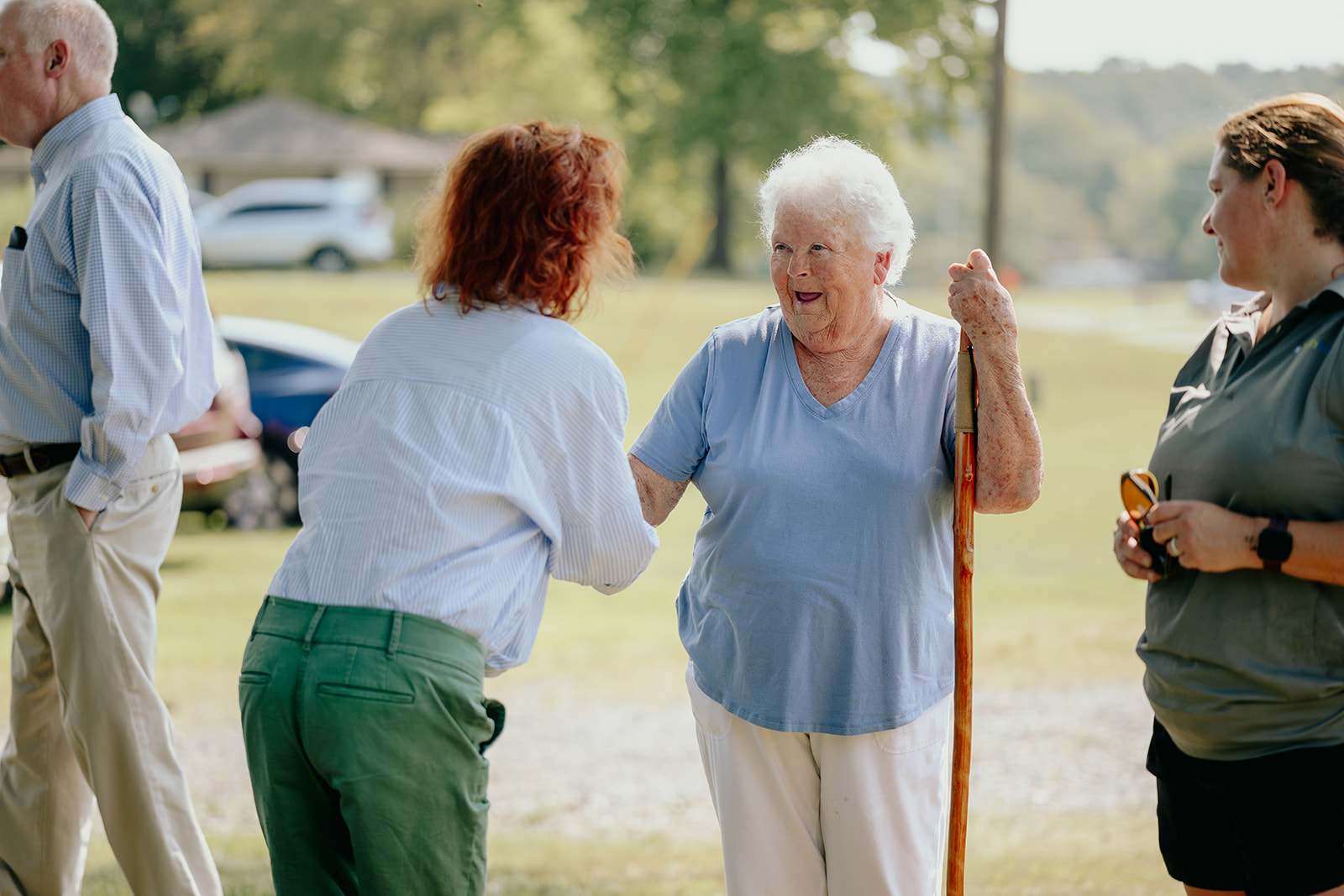
Family photographs hang from every wall of Ann Darnall’s Hardin, Kentucky, home. Children’s toys are neatly tucked away in the corner, waiting for her two great-grandsons to visit and scatter them on the floor.
“I have been called Boda since my grandson was born,” recalls Darnall. “When he was little, he’d call me Boda. We tried to tell him I wasn’t Boda, but he insisted I was. So everybody calls me Boda.”
When Ann and her husband, Jerry, found themselves empty nesters in the early 1990s, the couple decided to downsize and found a unique home — a basement house. It was built underground, so the land surrounds three sides of the home like a blanket. The builder had intended to add another floor, but the Darnalls liked the coziness of the basement house.
“We’ve been here ever since. It just worked out to be what we needed,” says the now 80-year-old.
Their family grew by one when a little terrier mix named Dolly joined the couple almost 13 years ago. Darnall says her husband spoiled their pup until he passed away two years ago. She’s managed the house’s upkeep with her family’s help but needed help with her bills on a single fixed income.
“My local power company [West Kentucky Rural Electric Cooperative Corporation (WKRECC)] called me and asked me if I wanted to participate in Home Uplift,” says Darnall.
David Smart, WKRECC chief executive officer, says Darnall’s basement home provided some natural energy efficiency, but heating and cooling her home with plug-in fans was not saving her money.
“Home Uplift helps recipients save at least 25% on their energy costs every month,” says Smart. “Right now, with the cost of everything going up, we’re actually helping lower one of their costs through Home Uplift.”
For Darnall, that meant having window units removed and replaced with new mini-splits in her living room and bedroom, along with attic insulation and a new fan in the bathroom. As a result, Darnall says she’s saving money and feels more comfortable in her home.
“The air feels cleaner and drier, which is helping with my COPD,” says Darnall. Research shows poor indoor air quality can aggravate preexisting medical conditions like asthma, emphysema or COPD. After a home is weatherized, people report having fewer bad health days and fewer doctor or emergency department visits.
Tim Hughes, TVA EnergyRight energy services consultant, says the goal of Home Uplift is to provide free home weatherization upgrades to income-eligible homeowners.
“Many folks are heating their home[s] in the winter by turning on an electric oven and opening the door or using kerosene space heaters instead of having a heating and cooling unit that works. That’s something we tend to take for granted. But some of these homes, like Ms. Darnall’s, didn’t have that.”
Darnall’s home is one of 35 Home Uplift homes in the WKRECC service territory funded partly by the Federal Home Loan Bank Affordable Housing Program. WKRECC, in partnership with the Purchase Area Development District, received $200,000 from the Affordable Housing Program, with EnergyRight matching the loan for a total of $400,000.
In addition to the upgrades made inside Darnall’s home, she also received beautification work in her yard thanks partly to the loan and to a donation from The Murray Bank and Lowe’s Home Improvement.
“We did some landscaping and tidying up around the property,” Hughes says. “Ms. Darnall is a huge University of Kentucky basketball fan, so we made sure to put the Wildcats mascot front and center.”
“I just love it,” says Darnall. “I’m so thankful to EnergyRight and WKRECC for this opportunity.”
Related stories:
TVA EnergyRight helps a mother of two preserve generations-old family home
Middle Tennessee church makes first-of-its-kind donation to TVA EnergyRight program
Home Uplift gives customers a hand up in creating a healthy, energy efficient home
Memphis schools discover significant energy savings and earn big rewards

It had all the makings of a school pep rally gearing up to cheer their team to victory. A DJ blasted music through speakers while taking to the mic to excite the crowd of teachers, students and city leaders in the school parking lot. The music occasionally faded to let the elementary and high school cheerleaders enthusiastically shout about pride and spirit. Other kids proudly waved bright blue pom-poms, but their homemade signs were the one indication that this was not a traditional pep rally. The posters did not display messages supporting the team. Instead, it was a simple “thank you” to their local power company Memphis Light, Gas and Water (MLGW) and TVA EnergyRight®. Then the cheerleaders made a big reveal — the schools had been awarded $500,000 in grant money, and the crowd erupted in cheers.
“It takes a lot to win a grant,” says Cindy Herron, vice president of EnergyRight. “A grant is not a given to the schools. The students and teachers must compete for the grants against other [DS1] schools. They have to look for ways to save energy, and we look at how they engage the schools and the community. Being with Power Center Academy today and seeing their hard work pay off is amazing.”
The road to get to this day for Power Center Academy’s elementary and high school started 12 months ago when representatives from EnergyRight and MLGW approached Yetta Lewis about joining the School Uplift program. After hearing about the success of the first cohort and how much money the schools saved, the co-founder and CEO of Gestalt Community Schools in Memphis, Tennessee, did not hesitate to say yes.
“The elementary is a former Kroger grocery store,” says Lewis. “Our high school used to be Southwest Community College. It’s wide-open spaces with high ceilings and just a beast to warm and cool. It’s very expensive.”
School Uplift supports schools in the region by reducing energy costs and improving the quality of the learning environment. Participating schools receive behavior-based strategic energy management (SEM) training while promoting engagement from faculty and students with easy, actionable energy saving tips and energy efficiency practices.
“We assign energy coaches to the school, and from there, they create energy teams that involve the students and school administrators,” says Kevin Wren, operations manager for EnergyRight.
Wren says the coaches met monthly to make sure things such as their HVAC systems were running at peak performance and were being cleaned regularly. He says changing behaviors was also another key component.
“In addition to the coaching, we got great educational materials that we could use in the classroom to remind students to turn off computers and lights,” says Lewis. “Our teachers didn’t have to recreate the wheel. There were resources right there with TVA and MLGW, and we want to continue using those resources throughout the year.”
Collaboration with MLGW was also crucial to each school’s success. “We were happy to help them save energy and utilize resources in other areas that make the school great,” says Natasha Rosko, commercial marketing representative for MLGW. “It’s just not about MLGW servicing them. We want to find ways to help all of our customers save energy and money.”
Power Center Academy’s successful participation earned them a $100,000 grant for the elementary school and a $400,000 grant for the high school. The money was in partnership EnergyRight, MLGW and Tennessee’s Energy Efficient Schools Initiative (EESI).
“TVA’s mission is to serve the people of the Valley and to make life better,” says Herron. “Schools are the heartbeat of the communities. It’s also about our future generation, so it just made sense to focus on what we could do in the schools to help them save energy.”
Power Center Academy students will help decide how the grant money is spent. Lewis says they are looking at building an outdoor classroom, upgrading their air filtration system and switching to LED lights.
“Schools are making hard decisions on whether to do more extra-curriculum activities or pay the light bill,” says Lewis. “We feel fortunate to have these savings that will be re-invested back into our students.”
TVA EnergyRight is currently accepting applications for the next School Uplift.
Related stories:
Bledsoe County Schools transform their energy training into cool savings
Tennessee teachers and students can ‘sense’ the health benefits of an energy efficient school
TVA EnergyRight helps a mother of two preserve generations-old family home

Jessica Malone’s kitchen is one of a kind. Her off-white, hand-painted cabinets turned into a literal “hands-on” paint project.
“I would let them [my sons] paint on the linoleum floor to use it as a canvas,” recalls Malone. “When they were done, I would mop it up. Then, Dalton, my youngest, wanted to make the project a little more interesting. Before I knew it, he and his older brother, Bretley, put their handprints on the kitchen table and, eventually, my cabinets and fridge.”
Initially not a fan of their work, Jessica came around to the new art installation in whimsical shades of red, purple and orange — a time-capsuled kitchen adorned with handprints of her fast-paced boys.

Malone and her two boys live in Minor Hill, Tennessee, about five miles north of the Alabama border. She grew up a mile down the road from her current home. Her farmhouse has been in their family for generations. Decades ago, her great-great-uncle moved the two-bedroom, one-bath from the nearby holler to its present location. Each generation has added rooms to the home. While that has made it unique, Malone admits the house is not the most energy efficient.
“My budget as a single momma is very tight, so any change to my bills, especially if they go up, has a big impact on our lives,” says Malone, who works full-time outside the home and is careful with her spending.
Tamieka Russell understands Malone’s concerns. “I was a young homeowner and a young mother, and I know for a fact you don’t have the money lying around to make energy efficiency upgrades,” says Russell. She’s worked at Pulaski Electric System for 20 years and is currently their Chief Customer Service Officer. She knew Malone would be a great candidate for the TVA EnergyRight Home Uplift program.
“PES can provide homeowners with an energy audit, and it tells you where to make energy efficient improvements to your home,” says Russell. “But if you’re a family with limited means, you can’t afford to make those upgrades to correct the problem. This program actually allows them to correct the problem.”
“Home Uplift was created to fund home energy upgrades for individuals and households with limited means,” says Bethany Kitch, Home Uplift senior program manager for TVA EnergyRight. The program partners with local power companies, like PES, to offer income-eligible families free weatherization improvements like updating HVAC units and water heaters and installing attic insulation.
“Families often spend 10% or more of their income on their utility bills, and they have to make tough choices between purchasing medication, food or paying their electric bills,” says Kitch.
Malone says she is grateful for the Home Uplift program. Not only has it helped cut her utility costs, but during the initial inspection, it also uncovered a problem she was unaware of.
“The contractor discovered my water heater was leaking,” says Malone. “I had no idea! It’s almost 30 years old, but I could never have afforded to replace it.” Crews not only installed a new water heater, but they also placed insulation in her attic and installed a fan in the bathroom to help reduce humidity.
Russell says Malone’s experience is why she’s excited to offer Home Uplift to her customers.
“Jessica makes a good candidate because she’s a young homeowner and a mother who doesn’t have $5,000 lying around for a new water heater unit or new insulation,” says Russell. “This program can help her focus that time and energy on her boys instead of worrying about the money that she may have to spend on improvements.”
Related stories:
Middle Tennessee church makes first-of-its-kind donation to TVA EnergyRight program
Home Uplift gives customers a hand up in creating a healthy, energy efficient home
Alabama school district makes the grade in sustainability

Sally Scales does not shy away from hard work. She maintains nearly straight A’s while juggling several after-school activities. Her drive is not surprising since her motto is, “Be all in or get out. There is no in-between.” As she starts her freshman year at Sheffield High School, she is starting to think about her future and the world she’s stepping into.
“Maybe it’s because we’re the next generation trying to say, ‘Hey, there is no Planet B. So, let’s clean up what we’re doing here,’ ” says Scales.
She says the environment wasn’t something she was concerned about even just a year ago. Scales jokes that she was more interested in recess. But when her school district, Sheffield City School, enrolled in TVA EnergyRight’s School Uplift program, it helped her see the impact she could make, even if it was small, sustainable steps.
“I think many people have a mindset of ‘what’s the big deal if I leave one light bulb on? It’s not gonna hurt,’ ” says Scales. “But when billions of people have that ‘one light bulb’ mindset, it becomes a problem my generation is responsible for.”
L.E. Willson Elementary principal Heather Collum shares Scales’ concerns.
“This is their future, and if we don’t teach them to preserve and protect what they have now, it might not be there,” says Collum. Her school participated in this year’s School Uplift program, along with the junior high and high school.
TVA EnergyRight senior program manager Clay Hoover runs the School Uplift program and has watched it evolve over the last few years.
“The program is designed to start with low and no-cost behavior changes for energy savings. Many of the schools we work with cannot make investments upfront, so we start by showing them how to run what they have more efficiently,” says Hoover.
Before the second School Uplift cohort started, Hoover and his team felt teachers and students needed to be more involved in their school’s energy savings. “Typically, we work with the maintenance staff for 12 months of energy management training,” says Hoover. “But we realized kids also need to understand the impact of their energy use.”
The team invited the Energy Monsters, already popular among children who attend EnergyRight’s Eye Spy Energy Workshop, to join the School Uplift curriculum. The adorable monster friends include Zap, Bolt, Watt, Newton, Breaker and Spark and they help children learn energy-saving habits that save money around the home and school.
Another new School Uplift initiative was the creation of student teams led by an adult Energy Champion to spearhead its energy-saving initiatives.
Collum chose Savanna Mize, who works with gifted and talented students, to be the Energy Champion for the school.
“I thought it was a great opportunity to teach the kids about saving energy and the importance of it for their future,” says Mize. She says teachers and students from all the schools in the district collaborated. They put together spreadsheets to track each school’s monthly energy bills. Mize also let the students take the reins in developing energy efficiency activities for the entire school.
“Before I was on this team, I just had basic ideas about how to save energy,” says 6th grader Cullen Archer. “But now that I’m on the team, I can express myself and think about what I could do to improve this world.”
“By instilling a sense of ownership with School Uplift, we’re helping to grow our student leaders,” says Mize.
Scales and her fellow students created a series of videos highlighting each school’s accomplishments, such as the student-led energy audit team. After school, they would visit every classroom to ensure lights were turned off and equipment was unplugged.
“The team hung notes on the teachers’ doors to show what they did right and what they could have done better, says Scales. “It made for interesting conversations in the morning. Teachers can be competitive.”
TV monitors in the hallways of the schools displayed energy scores. Mize says many of the students and teachers liked Blackout Day, where they spent the whole day using flashlights to learn and teach. She says it helped draw attention to how much electricity they were using.
“It’s another lesson in conserving energy,” says Collum. “Our elementary school building dates back to 1962, so it doesn’t hold heat or cold air really well due to the structure of the building. So, we’re going to do everything and anything to help protect and save there.”
Sheffield City School Superintendent Carlos Nelson says student involvement will also be critical in sustaining long-term energy efficiency changes.
“We want something that’s embedded as the students move to different grade levels and eventually graduate,” says Nelson. “We also want them to bring this home and remind mom and dad to turn off lights, to unplug cords not being used.”
Hoover says Sheffield City School’s success helped them win a $200,000 grant. School officials will use it to upgrade LE Willson Elementary since it’s the district’s oldest building.
Nelson also credits the partnership between TVA EnergyRight and their local power company, Sheffield Utilities, for their success. “They were both great partners and would go out of their way to help us,” says Nelson.
Sheffield Utilities general manager Steve Hargrove says his team has been working on a 10-year sustainability plan for their customers, and he says School Uplift aligns with their goals. “We’re building a 10-megawatt solar farm as a part of our long-term plan to reduce our carbon footprint,” says Hargrove. “It’s all about lowering energy use, and we involve students now because this will impact them as our future customers.”
Scales says she’s already seeing her family use electricity differently at home.
“They are more mindful of turning off a light when leaving a room or unplugging an unused cell phone charger. It’s become our responsibility, but I don’t see it as a burden,” says Scales. “It’s such a tiny thing that makes a big difference.”
Related stories:
Bledsoe County Schools transform their energy training into cool savings
Tennessee teachers and students can ‘sense’ the health benefits of an energy efficient school
Middle Tennessee church makes first-of-its-kind donation to TVA EnergyRight program

Jerry Perry lives in what appears to be an unassuming house across the street from a park in Murfreesboro, Tennessee, until he proudly shows off the addition he created when he moved in decades ago – a small hair salon, complete with a vintage hair dryer chair and salon bowl.
“I lived and worked in San Francisco for 20-plus years at my own salon,” says Perry. ”I spent most of my free time traveling the world. That’s the only reason to work was to travel.”
He moved back to Murfreesboro in 1999 to help take care of his mother and eventually moved into the family house on Smith Street, built by Perry’s uncle in the 1940s.
“It’s a pretty well-kept home,” says Perry. “I’ve made some improvements here and there.”
A diagnosis of spinal stenosis forced Perry to hang up his salon apron for good a few years ago. The disease left him unable to bend over or stand comfortably for long periods of time. The 80-year-old relies on social security, but it doesn’t leave room for the unexpected, like when his heating and air-conditioning unit gave out in the middle of winter.
“I didn’t have the money to purchase a new HVAC,” recalls Perry. “For about five weeks, I used space heaters and wood for the stove fireplace. One night, it was in the 20s, and I was sitting in my living room with four coats on and a fire in the fireplace, and I was still cold.”
Perry says he was overjoyed when he heard about TVA EnergyRight’s Home Uplift program in partnership with Middle Tennessee Electric (MTE). A TVA-certified advisor came to his home and found that, while Perry’s home was well-insulated, some equipment was not energy efficient. In addition to replacing Perry’s broken HVAC, Home Uplift swapped out his heat pump with an energy efficient unit at no cost to him.
“Home Uplift offers weatherization improvements by upgrading HVAC units, water heaters, attic insulation and other energy efficiency measures,” says Bethany Kitch, senior EnergyRight program manager. She says families with limited means often spend 10% or more of their income on their utility bills, and they have to make tough choices between purchasing medication or food or paying their electric bills.
“I think Home Uplift is one of the best programs I’ve seen TVA implement because it directly impacts those who may have a hard time figuring out their energy needs,” says Robert White, MTE vice president of member services & community relations. “The folks who end up having the highest bills can’t afford to upgrade their HVAC or insulation, and it’s no fault of their own.”
White says he’s impressed Home Uplift matches dollar-for-dollar the monetary investment made by MTE. “But there is also a commitment from TVA that if we (MTE) partner with any third-party organization dollar-wise, they will also do that match,” says White.
Recently, White approached his church leaders at First Baptist Church Murfreesboro with a proposal to donate to the Home Uplift program. The church is a second home to White, who also serves as a deacon. Senior Pastor James McCarroll says he often speaks to his congregation about the meaning of “neighbor” and encourages them to let go of preconceived notions.
“Historically, humans gather with people who look like them, sound like them, talk like them, and have similar demographics as they do. So, that causes us to create silos. My goal is to make us look beyond the walls of the church, beyond the block of the church, and beyond the area of the churches to where God is calling us to serve.”
McCarroll says many people in his community could potentially feel the impact of Home Uplift. He said it was an easy decision for First Baptist Church Murfreesboro to be the first third-party donation to Home Uplift.
“When you’re used to having water, used to all of your doors being on the hinges, having electricity or being in a room where there’s no draft coming in because the windows are properly repaired, it can be shocking to see the conditions that people accept as their normal.”
EnergyRight matched the $5,000 church donation for a total of $10,000, which is the average cost of one Home Uplift.
“The mission of the First Baptist Church aligns directly with TVA’s mission to serve the people of the Tennessee Valley,” says Kitch. “We want to make sure that everyone has access to these new technologies to lower their electric bills, so they can use that extra funding to purchase food, gas and medication.”
Pastor McCarroll hopes this donation will encourage others to act. “You cannot say you’re serious about the health of your community if you’re not directly investing in the people who need to be healthy in your community.”
If you’re interested in contributing to Home Uplift as an individual or an organization, please email energyrighthomes@tva.gov. If you or someone you know would like to apply to Home Uplift, visit EnergyRight.com/home-uplift.




